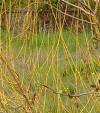Salix Lutea Tree Information
Images of Salix Lutea:






Salix Lutea grows in the following 21 states and provinces:
Alberta, Arizona, California, Colorado, Idaho, Iowa, Kansas, Manitoba, Minnesota, Montana, Nebraska, Nevada, New Mexico, North Dakota, Ontario, Oregon, Saskatchewan, South Dakota, Utah, Washington, WyomingInformation about Salix Lutea:
as well ashe Salix Lutea is commonly known as the Yellow Willow.
The currently accepted scientific name of yellow willow is Salix lutea Nutt. There are no infrataxa .Yellow willow is found at low to mid-elevations from Alberta to Manitoba, south to western Kansas and New Mexico, west to Arizona and California, and north along the Sierra Nevada Mountains to eastern Washington. It is lacking in the Great Basin .Yellow willow typically occurs as a pioneer or early seral species along the banks of rivers or streams. In these riparian comminities, it is often found with cottonwoods (Populus spp.) and other willows (Salix spp.). Published classification schemes listing yellow willow as an indicator species or as a dominant part of the vegetation in community types or dominance types are presented below. Riparian dominace types of Monatana Plant associations of Region Two: Potential plant communities of Wyoming, South Dakota, Nebraska, Colorado, and Kansas Riparian community type classification of eastern Idaho - western Wyoming Riparian community type classification of norethern Utah and adjacent Idaho Associates: In Idaho, yellow willow is generally confined to Wyoming big sagebrush (Artemisia tridentata var. wyomingensis) and grass vegetation zones, seldom extending into the forest, and avoiding cooler mountain big sagebrush (A. tridentata var. vaseyana) zones . Associated plants of Idaho, Montana, Utah, and Wyoming often include: 1) overstory trees such as eastern cottonwood (P. deltoides), black cottonwood (P. trichocarpa), water birch (Betula occidentalis), and green ash (Fraxinus pennsylvanica), 2) shrubs such as sandbar willow (S. exigua), Pacific willow (S. lasiandra), Booth willow (S. boothii), Drummond willow (S. drummondiana), Wood's rose (Rosa woodsii), red-osier dogwood (Cornus sericea), and inland currant (Ribes oxyacanthoides ssp. setosum), 3) very wet site understory herbs such as beaked sedge (Carex rostrata) and field horsetail (Equisetum arvense), and 4) moist site understory herbs such as alpine aster (Aster foliaceus), Richardson geranium (Geranium richardsonii), and Kentucky bluegrass (Poa pratensis) .Some of the information provided here is attributed to:Uchytil, Ronald J. 1989. Salix lutea. In: Fire Effects Information System, [Online]. U.S. Department of Agriculture, Forest Service, Rocky Mountain Research Station, Fire Sciences Laboratory (Producer). , available at the USDA Fire Effects Information System (FEIS) website